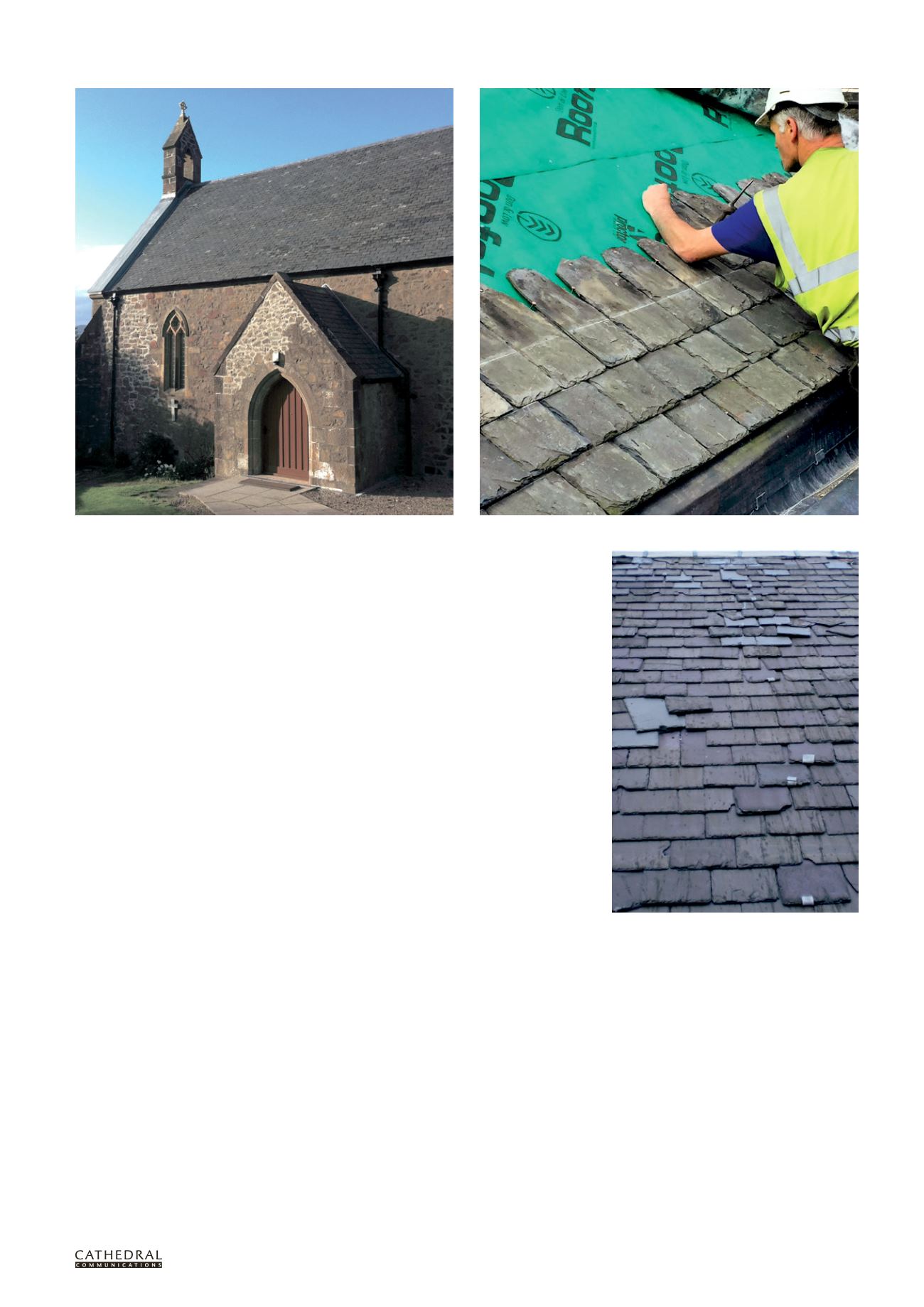

BCD SPECIAL REPORT ON
HISTORIC CHURCHES
24
TH ANNUAL EDITION
29
rain and wind action and more thermal
movement of the lead, it can be more
effective for long term performance
to use a lead plumber’s mastic sealant
to the top of the cover flashing.
Where water penetration through
skews has become extensive, further
protection can be provided by cloaking
the copes with a lead capping, either by
tucking the lead into a groove or ‘raggle’
cut into the top surface of the cope, or
entirely capping the cope. This not only
changes the appearance quite dramatically
(in some cases requiring formal planning
and listed building consents), but it also
changes the way a cope behaves, with
an increase in fast water run-off from its
smoother surface. As this may affect the
wall below, careful consideration should
be given to whether a full covering is
really necessary.
The replacement of lead flashings
and dressings that have aged or are
storm-damaged provides an opportunity
for more robust detailing. Increasing
the code of the lead flashings improves
their resistance to wind-lift and enables
the girth and cover of flashings to be
extended. At valleys and parapet gutters
the lap may be extended under the
slates and the depths of the stepped
joints may be increased, while catch
pits or ‘sumps’ can be added at outlets
to increase the capacity of the gutter.
Combining these improvements with
larger chutes and outlets to hoppers
enables the disposal system to handle
a greater volume of rainwater.
ROOFING SLATES
Slates disturbed by high winds often
rattle on their fixings, which wears away
the fixing holes and then loosens them,
making them more prone to slippage. The
choice of nails and fixing methods can
make a significant difference to whether a
roof can withstand extreme weather.
The importance of the diminishing
courses typical of traditional roofs has
often been under-appreciated, but the
smaller slates at the higher parts of the
roof are less likely to be flipped up by the
wind due to their greater weight relative
to size, while the lower, larger slates are
better for coping with a larger shedding
of water. New slates that are uniformly
sized and larger than the typical small
traditional ones, will not perform well
when on an exposed roof, even if they are
of good quality.
The typical specification for Scottish
slating is to ensure a good deep lap of slate
coursing, and commonly the outer two
metre edge of a roof is fixed more securely
by double nailing or cheek nailing (a nail
at the head and another at the side of each
slate). We have seen an extraordinary
collection of refixing methods, using
‘tingles’ (clips) and adhesives as an
attempt to keep the slates on, but have
found the same roof will remain sound in
storm conditions if properly re-slated with
traditional detailing and in accordance
with best practice.
The selection of replacement slate is
important. It is often possible to salvage
up to 50 per cent of the slate from an
A reslated roof with lead caps to the skews
A roofer cheek nailing slates on an exposed roof
A wind-damaged slate roof with tingles and a variety
of other poor repairs
existing roof for reuse on the most
appropriate roof planes. Ideally, these
would be supplemented with new material
to match, so it is a disappointment that
there are no longer slate quarries open
in Scotland on a commercial basis, and
the stock of salvaged slate is constantly
diminishing. Nevertheless, it is usually
possible to find slates which match those
originally used in the area and which
perform well in the climate, being of
similar weight and density and resistance
to frost. For best weathering and aesthetic
results, either second-hand scotch slate


















